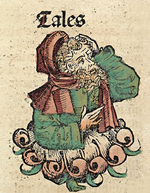The world in the 6th century BC


| Millennia |
|---|
| 1st millennium BC |
| Centuries |
| Timelines |
| State leaders |
| Decades |
| Categories: |
| Births – Deaths Establishments – Disestablishments |
The 6th century BC started on the first day of 600 BC and ended on the last day of 501 BC.
In Western Asia, the first half of this century was dominated by the Neo-Babylonian Empire, which had risen to power late in the previous century after successfully rebelling against Assyrian rule. The Kingdom of Judah came to an end in 586 BC when Babylonian forces under Nebuchadnezzar II captured Jerusalem, and removed most of its population to their own lands. Babylonian rule was ended in the 540s by Cyrus, who founded the Persian Empire in its stead. The Persian Empire continued to expand and grew into the greatest empire the world had known at the time.
In Iron Age Europe, the Celtic expansion was in progress. China was in the Spring and Autumn period.









